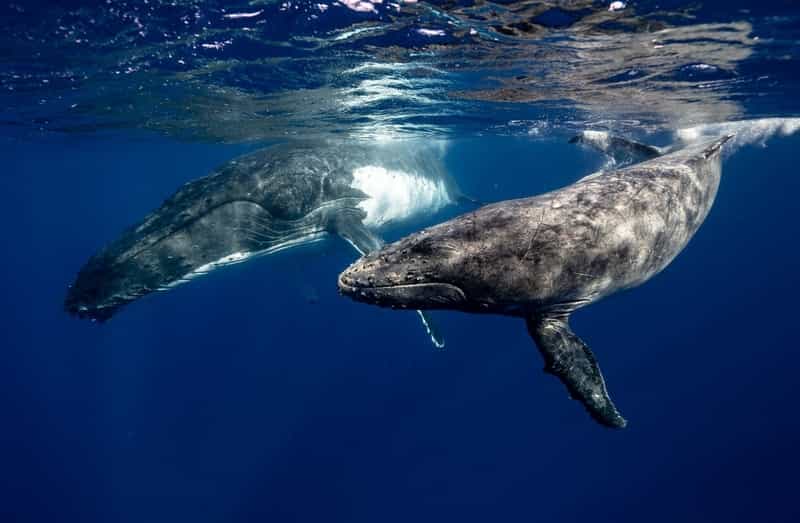Humans have been fascinated with whales for longer than we have recorded history. As some of the largest animals on the planet, they invoke wonder at first sight for many people, and they always have. When you add to that the fact that they are air breathing animals living in the water full time, their presence feels almost mythic on its face. Whales are not only important for their symbolic value, though, they also play a vital role in the ocean’s ecosystem and the planet’s oxygen cycle.
Fertilizers of Phytoplankton
Why is the ocean so important to human life? About half the oxygen on earth is made in the ocean, from the microscopic plant like organisms called phytoplankton. These tiny creatures produce their own food through photosynthesis just like freshwater plankton does, but since there is so much more ocean than fresh water on earth, they produce a lot more of it!
Unfortunately, phytoplankton can’t reach down with roots into the soil at the bottom of the ocean, so it doesn’t pick up nutrients like rooted plants do. Instead, it relies on free floating nutrients in the water. Whales pass waste as they swim, seeding the needed nutrients into the surface waters like fertilizer over a field and providing the plankton with the raw materials needed to photosynthesize food and breathe out oxygen.
Whales Help Capture Carbon
Most people who go orca whale watching California don’t think about how these creatures help to lock carbon down so it doesn’t recirculate to the atmosphere, but they play a big role in the process. Carbon re-enters the atmosphere when fossil fuels and biomatter burns creating carbon monoxide, carbon dioxide, and other gases. It gets locked out of the atmosphere when it is in living organisms, and the bigger they are, the more they lock down.
That means a pod of orcas can actually help keep carbon out of the atmosphere as its population grows. It also means even larger species like the blue whale and the gray whale contribute even more. Rebuilding the world’s whale population can lock down a significant part of the extra carbon dioxide in the atmosphere. How does that work?
- Whales fertilize phytoplankton, which grows by inhaling carbon dioxide for photosynthesis and exhaling oxygen
- Some whales and many fish eat the phytoplankton, locking the carbon used to make biomass into their digestive cycles, later to excrete it as waste or add it as mass
- Excreted waste is still biomass, locking what carbon does not get used by growing phytoplankton to the ocean floor where it can not easily re-enter the atmosphere
When you go whale watching San Diego, think about this important part of the planet’s oxygen cycle and how much we depend on the whales’ contribution. The planet literally wouldn’t be the same without them.
See Whales Up Close in San Diego
There are plenty of places in town to watch the whales as they migrate through the seasons, but for the best views you can’t beat the harbor tours offered by various local companies. Tours not only put you close to the whales so you can see whoever is passing through at the time of your visit, they also provide you with a chance to hear a lot about the biology of the ocean in this part of the world and the contribution of whales to the ecosystem.


